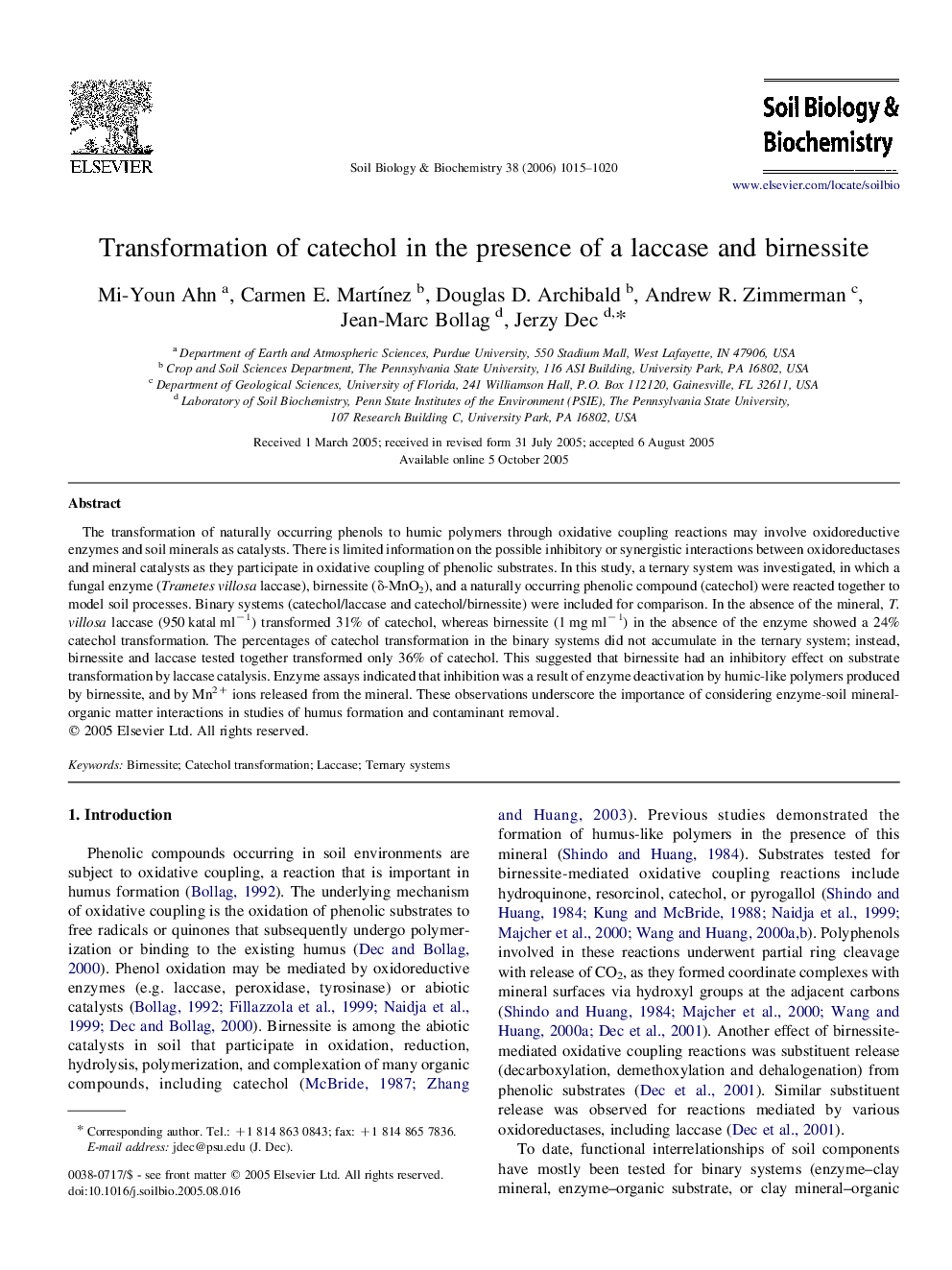| Article ID | Journal | Published Year | Pages | File Type |
|---|---|---|---|---|
| 2026332 | Soil Biology and Biochemistry | 2006 | 6 Pages |
The transformation of naturally occurring phenols to humic polymers through oxidative coupling reactions may involve oxidoreductive enzymes and soil minerals as catalysts. There is limited information on the possible inhibitory or synergistic interactions between oxidoreductases and mineral catalysts as they participate in oxidative coupling of phenolic substrates. In this study, a ternary system was investigated, in which a fungal enzyme (Trametes villosa laccase), birnessite (δ-MnO2), and a naturally occurring phenolic compound (catechol) were reacted together to model soil processes. Binary systems (catechol/laccase and catechol/birnessite) were included for comparison. In the absence of the mineral, T. villosa laccase (950 katal ml−1) transformed 31% of catechol, whereas birnessite (1 mg ml−1) in the absence of the enzyme showed a 24% catechol transformation. The percentages of catechol transformation in the binary systems did not accumulate in the ternary system; instead, birnessite and laccase tested together transformed only 36% of catechol. This suggested that birnessite had an inhibitory effect on substrate transformation by laccase catalysis. Enzyme assays indicated that inhibition was a result of enzyme deactivation by humic-like polymers produced by birnessite, and by Mn2+ ions released from the mineral. These observations underscore the importance of considering enzyme-soil mineral-organic matter interactions in studies of humus formation and contaminant removal.
